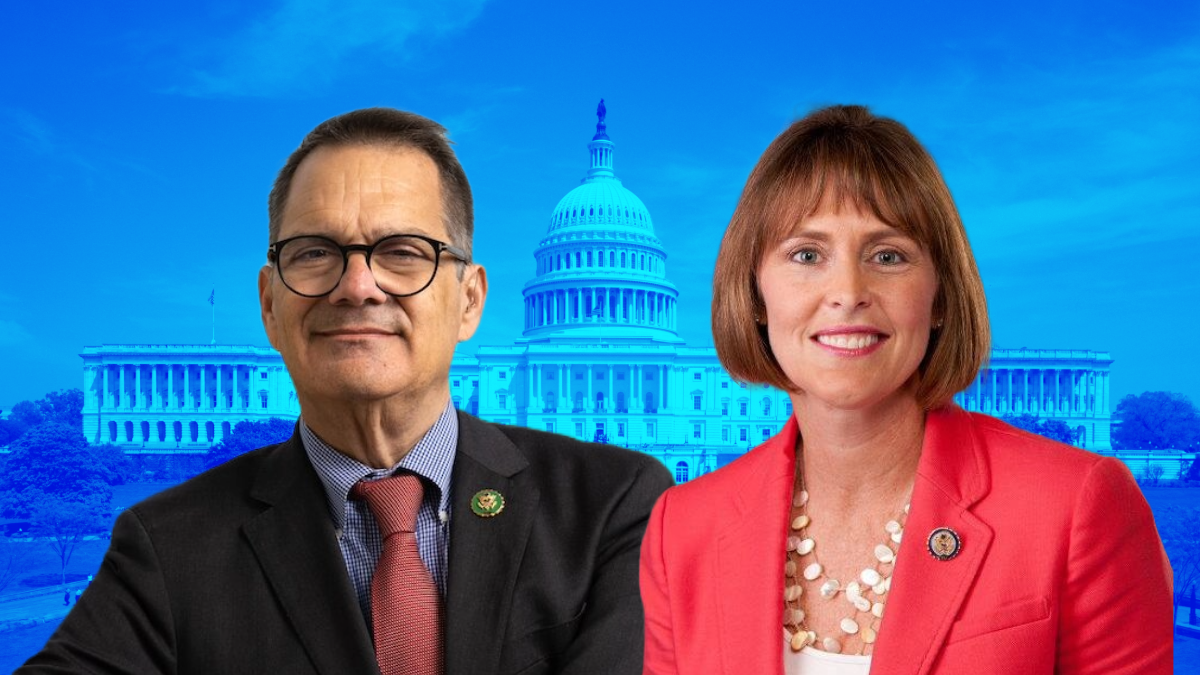What’s Different About the US House Version of the Kids Online Safety Act?
John Perrino / Apr 17, 2024
Images of Reps. Gus Bilirakis (R-FL) and Kathy Castor (D-FL) superimposed on an image of the US Capitol. Wikimedia
The Kids Online Safety Act (KOSA) now has a companion bill in the US House of Representatives after accumulating nearly 70 Senate co-sponsors. Reps. Gus Bilirakis (R-FL) and Kathy Castor (D-FL) introduced the House bill last Tuesday with six initial co-sponsors.
The House bill generally mirrors the Senate version of KOSA, but one update represents a fundamental change. While the Senate version of KOSA broadly applies a duty of care to protect young people against specific risks including cyberbullying and sexual exploitation, the House version limits those obligations to the largest, “high impact,” social media, messaging, and multiplayer video game platforms.
The House version of KOSA takes a tiered approach to regulatory compliance. A “high impact online company” with at least $2.5 billion in annual revenue or more than 150 million global monthly active users has the most obligations under the bill. A second tier covers online platforms with at least $200 million in revenue or 200,000 users, and a third tier is for smaller platforms that don’t meet those user or revenue thresholds.
This tiered approach is similar to the European Union’s online safety regulation, the Digital Services Act (DSA), which has additional obligations for the largest online platforms, including risk assessments and transparency measures.
The language in the Senate version of KOSA is intentionally broad, in part to cover anonymous social messaging apps which come and go in popularity. The randomized video chat service Omegle was recently shutdown following a child abuse lawsuit. Youth online safety advocacy organization Fairplay and parent activist Kristin Bride filed a complaint urging the Federal Trade Commission to investigate an anonymous question and answer app, Not Gonna Lie (NGL), that Bride says contributed to her son’s cyberbullying and suicide.
The tiers of platforms also apply new “knowledge” standards for identifying and applying measures in the bill to children and teens. The largest, high impact, online platforms would have the strictest requirements to know which users are children under 13 or minors under 17. More lenient standards would be applied to mid-size platforms while the smallest platforms would need “actual knowledge” beyond available data to be held liable for safety violations.
The House bill also narrows the definition of “compulsive usage” to features that cause repetitive behavior resulting in a “mental health disorder.” This refers to a clinical definition by the American Psychiatric Association compared to the Senate version of the bill which broadly refers to “psychological distress.”
This update may also appeal to LGBTQ advocates who are concerned the bill is overly broad and could be used to limit content related to gender identity. Updated language also removes “addiction” references, replacing them with the clinical term, “compulsive usage.” One of the House co-sponsors, Rep. Kim Schrier (D-WA), is a pediatrician and the APA is actively engaged with the legislation.
A minor update removes a ban on “deceptive marketing practices, or other financial harms” in the House version of the duty of care. This may be in response to industry pressure, but design features covered by the duty of care were expanded to include push alerts and status rewards encouraging more time spent on an app.
Rep. Castor told The Washington Post that the House bill is still “early” in the legislative process and she would like to make the bills “identical in the House and Senate.”
A new American Psychological Association (APA) report highlights the importance and complexities of adolescent social media use. “Using social media is not inherently beneficial or harmful to young people. Adolescents’ lives online both reflect and impact their offline lives,” the report states. The APA recommends “age-appropriate” design and limited social media use by teens with healthy device usage modeled by parents or caregivers.
Accompanying APA materials outline the limitations of common public policy proposals, including age restrictions on social media use and parental controls. Both versions of KOSA would require default parental tools to manage privacy settings and restrict purchases or time spent on an app. However, KOSA also provides default privacy and safety protections with tools empowering young people to control their experiences.
What’s Next for KOSA?
KOSA is scheduled to be discussed during a House hearing today which also includes the American Privacy Rights Act discussion draft released by House Energy and Commerce Chair Cathy McMorris Rodgers (R-WA) and Senate Commerce Chair Maria Cantwell (D-WA).
Retiring House Commerce Chair McMorris Rodgers is likely to prioritize her new privacy legislation ahead of the August recess. Lawmakers may attempt to combine widely supported privacy and youth online safety legislation, but sticking points remain which could tie up the bills.
Rep. Bilirakis chairs the House subcommittee that KOSA will have to go through, but it will be an uphill battle to move the legislation through committee and schedule a House vote in an election year.
Advocates will likely remain focused on the Senate where KOSA advanced unanimously out of committee and awaits a scheduled floor vote. Youth online safety is among the many policy priorities set by Majority Leader Chuck Schumer (D-NY) for this session.
The introduction of House legislation comes more than two months after the Senate Judiciary Committee held a hearing on youth online safety with the CEOs of Meta, TikTok, X, Snapchat and Discord. KOSA’s Senate sponsors, Richard Blumenthal (D-CT) and Marsha Blackburn (R-TN) promote their bill as the result of a series of five earlier Senate hearings, including 2021 testimony by Facebook whistleblower Frances Haugen.
“The House and Senate must now work together to swiftly get this historic bill across the finish line. We don’t need another hearing, we need action,” Council for Responsible Social Media (CRSM) co-chair and former House Majority Leader Dick Gephardt (D-MO) said in a statement.
Some privacy advocates remain opposed to the bill. KOSA would task the National Institute of Standards and Technology (NIST) to conduct a study on age verification, and set specific requirements for the accounts of children 16 or younger.
Regardless of legislative progress, the Biden-Harris Administration’s Kids Online Health and Safety Task Force is expected to publish public policy recommendations, industry guidance and parental resources later this spring and recently participated in a listening session at Stanford University.
Even if KOSA fails to advance this year, the bill is likely to return next Congress. Strong bipartisan support for children’s online safety, especially among parents, makes this a priority issue regardless of which political party controls either chamber of Congress or the White House.
Authors
